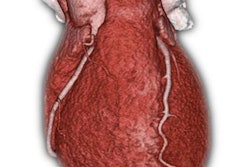Wednesday, November 30 | 3:20 p.m.-3:30 p.m. | SSM18-03 | Room N229
Epidural spine metastases are defined as a radiologic critical finding because any delay in reporting may result in substantially increased morbidity. But how can imaging be optimized to find more of them?"Epidural metastases are most commonly characterized on MRI only when symptomatic; however, asymptomatic cancer patients are most commonly surveillanced on CT," Dr. Lauren Kim, from the U.S. National Institutes of Health, told AuntMinnie.com.
In this study, the researchers characterized the imaging features of 319 epidural metastases on CT over a 12-year-period, looking for better ways to visualize them and improve detection. They settled on lesion size as the most reliable feature.
Epidural metastases are commonly underreported, with just 40% sensitivity when lesions are small, the authors concluded. Quantitative image analysis showed that their low contrast makes them inherently difficult to see.
"Our study suggests that magnified views of the spine on soft-tissue-range window settings may optimize visualization, and thereby detection, of epidural metastases on CT," they wrote.




















